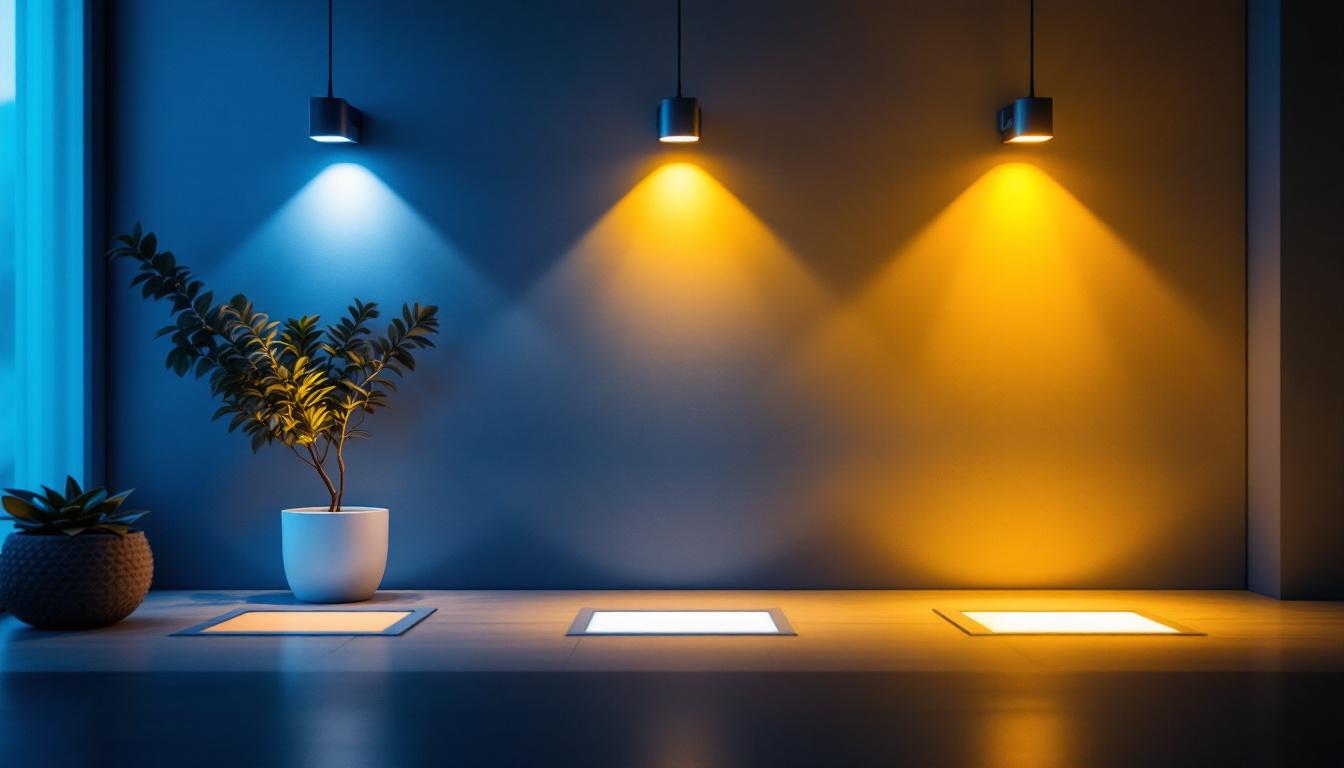
Lighting contractors play a crucial role in enhancing the functionality and aesthetics of residential and commercial spaces. Among the various lighting fixtures available, attic light fixtures often remain overlooked. However, understanding their significance, installation requirements, and design options can greatly enhance a contractor’s service offering. This article aims to demystify attic light fixtures, providing essential insights for lighting contractors.
Attic light fixtures serve a specific purpose, primarily illuminating spaces that are often neglected. These fixtures not only improve visibility but also enhance safety and accessibility in attics, which are commonly used for storage or as additional living space. In many homes, attics can become dark, cluttered areas that are difficult to navigate, making proper lighting essential for both functionality and peace of mind.
There are several types of attic light fixtures available, each designed to meet different needs and preferences. The most common types include:
Proper lighting in attics is essential for several reasons. First, it enhances safety by reducing the risk of accidents caused by poor visibility. Second, adequate lighting can make the space more functional, allowing homeowners to utilize attics for various purposes, such as storage, hobbies, or even as additional living areas. A well-lit attic can be transformed into a cozy reading nook, a craft room, or even a home office, making it a valuable extension of the home.
Furthermore, well-lit attics can contribute to the overall energy efficiency of a home. By utilizing energy-efficient lighting options, contractors can help homeowners save on energy costs while also reducing their environmental footprint. LED fixtures, for example, not only consume less power but also have a longer lifespan compared to traditional bulbs, making them a cost-effective choice in the long run. Additionally, incorporating dimmer switches can allow for customizable lighting levels, further enhancing the versatility of the attic space.
Moreover, the choice of lighting can significantly affect the ambiance of the attic. Warm-toned bulbs can create a welcoming atmosphere, while cooler tones can promote alertness and focus, making them ideal for workspaces. Homeowners should consider the activities they plan to undertake in their attics when selecting lighting options. For instance, if the attic is used for arts and crafts, bright, natural light mimicking daylight can help in accurately assessing colors and details, ensuring that projects are completed to satisfaction.
When installing attic light fixtures, several factors must be taken into account to ensure a successful outcome. These considerations include the type of fixture, electrical requirements, and safety protocols.
Before installing any attic light fixture, it is crucial to assess the existing electrical infrastructure. This includes checking the capacity of the circuit and ensuring that it can handle the additional load of the new fixtures. In some cases, it may be necessary to upgrade the electrical system to accommodate new lighting.
Additionally, contractors should ensure that all wiring is up to code and that appropriate safety measures are in place. This may involve using insulated wiring to prevent overheating and ensuring that all connections are secure and properly insulated. It is also wise to consider the type of bulbs being used; for instance, LED fixtures are not only energy-efficient but also produce less heat, which can be a significant advantage in an attic environment where temperatures can soar.
Safety should always be a top priority when working in attics. Contractors should be aware of potential hazards, such as low headroom, exposed nails, and insulation materials. Wearing appropriate protective gear, including hard hats and gloves, is essential to minimize the risk of injury.
Moreover, it is advisable to use ladders or scaffolding that are stable and secure. Ensuring proper ventilation is also important, especially when working in confined spaces where dust and debris may accumulate. Additionally, it is beneficial to have a spotter present to assist with lifting heavy fixtures and to provide guidance on navigating the attic safely. Familiarizing oneself with the layout of the attic before commencing work can also prevent accidents, as it allows for a better understanding of the space and its potential hazards.
Design plays a significant role in the selection of attic light fixtures. The right design can enhance the overall aesthetic of the attic while providing functional lighting. Contractors should consider various design elements when recommending fixtures to clients.
The style of the attic light fixture should complement the overall design of the home. For instance, a rustic pendant light may be suitable for a farmhouse-style home, while sleek recessed lighting might be more appropriate for a modern space. Understanding the homeowner’s preferences and the architectural style of the house is crucial in making the right choice.
In addition to style, color temperature is another important design consideration. Warm white light can create a cozy atmosphere, while cooler white light may be better for functional spaces. Contractors should discuss these options with homeowners to ensure that the selected fixtures meet their needs.
With the growing emphasis on sustainability, many homeowners are seeking energy-efficient lighting solutions. LED attic light fixtures are an excellent choice, as they consume significantly less energy than traditional incandescent bulbs and have a longer lifespan. Contractors should be well-versed in the benefits of LED lighting and be prepared to educate clients on these advantages.
Incorporating smart lighting technology can also enhance energy efficiency. Smart bulbs allow homeowners to control their attic lighting remotely, set schedules, and even adjust brightness levels. This not only improves convenience but also contributes to energy savings.
While installing attic light fixtures can greatly enhance a space, there are common challenges that contractors may face. Understanding these challenges and how to address them is essential for successful installations.
Attics often present unique challenges due to limited space and accessibility. Low ceilings and cramped conditions can make installation difficult. Contractors should be prepared to work in tight spaces and may need to use specialized tools to navigate these challenges.
Additionally, ensuring that the fixtures are positioned correctly for optimal lighting can be tricky. It may require careful planning and consideration of the layout of the attic to ensure that all areas are adequately illuminated.
Insulation is another factor that can complicate attic lighting installations. It is crucial to ensure that light fixtures are properly rated for use in insulated spaces. Using non-IC (insulation contact) rated fixtures in insulated areas can lead to overheating and potential fire hazards.
Contractors should also be aware of the type of insulation present in the attic. If necessary, they may need to work with insulation professionals to ensure that the installation meets safety standards while maintaining the effectiveness of the insulation.
Once attic light fixtures are installed, ongoing maintenance is essential to ensure their longevity and functionality. Lighting contractors should provide homeowners with guidance on how to properly care for their fixtures.
Regular cleaning can help maintain the appearance and performance of attic light fixtures. Dust and debris can accumulate over time, diminishing the quality of light. Homeowners should be advised to periodically clean the fixtures using a soft cloth and mild cleaning solution, avoiding harsh chemicals that could damage the finish.
In addition to cleaning, contractors should recommend that homeowners periodically check the bulbs and replace any that have burned out. This proactive approach can prevent dark spots in the attic and ensure that the space remains well-lit.
As technology advances, homeowners may want to upgrade their attic light fixtures to incorporate newer, more efficient options. Contractors should stay informed about the latest lighting trends and technologies, allowing them to offer valuable recommendations to clients.
Encouraging homeowners to consider upgrades not only enhances their attic lighting but also keeps the space aligned with modern design and energy efficiency standards.
Attic light fixtures may not always be at the forefront of a contractor’s mind, but they play a vital role in enhancing the functionality and safety of attic spaces. By understanding the types of fixtures available, installation considerations, design options, and maintenance requirements, lighting contractors can provide comprehensive services that meet the needs of their clients.
As the demand for versatile and energy-efficient lighting solutions continues to grow, contractors who are knowledgeable about attic lighting will be well-positioned to excel in their field. By demystifying attic light fixtures, this article aims to equip lighting contractors with the information they need to succeed in this often-overlooked area of lighting design.
Ready to elevate your attic lighting installations with premium fixtures that combine quality, affordability, and ease of purchase? Look no further than LumenWholesale. Our extensive selection of spec-grade lighting products meets the highest industry standards, ensuring that your projects shine with reliability and performance. Say goodbye to local distributor markups and hello to unbeatable wholesale prices, free shipping, and the convenience of bulk buying. Make your next project a beacon of excellence with Wholesale Lighting at the Best Value from LumenWholesale.

Discover the essential facts about hanging lantern lights that every lighting contractor should know.

Discover why night lights outdoor are essential in lighting installations, enhancing safety, security, and aesthetics.

Explore the pros and cons of square pot LED lights compared to other alternatives in this comprehensive guide.

Discover why lighting contractors should prioritize fluorescent bulbs in their projects.